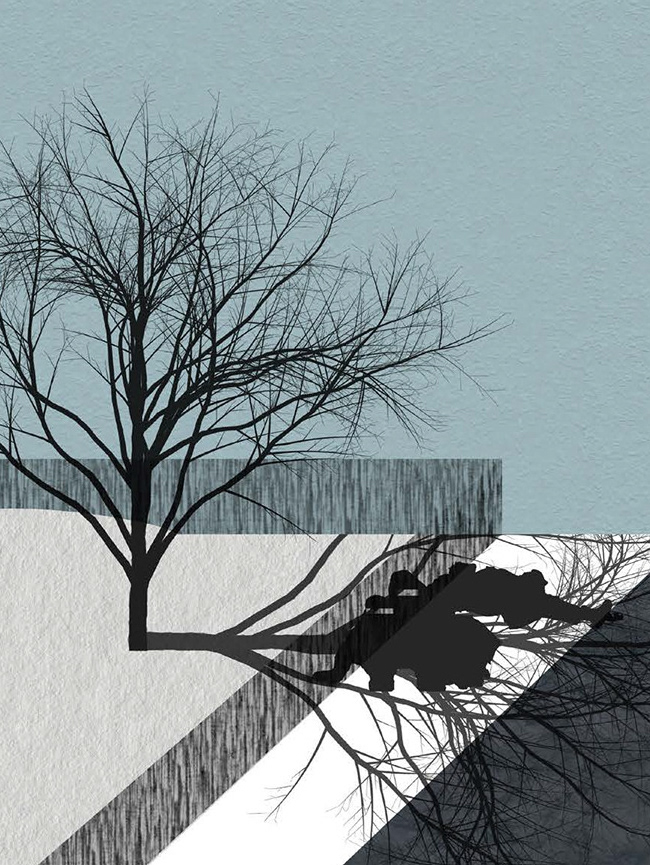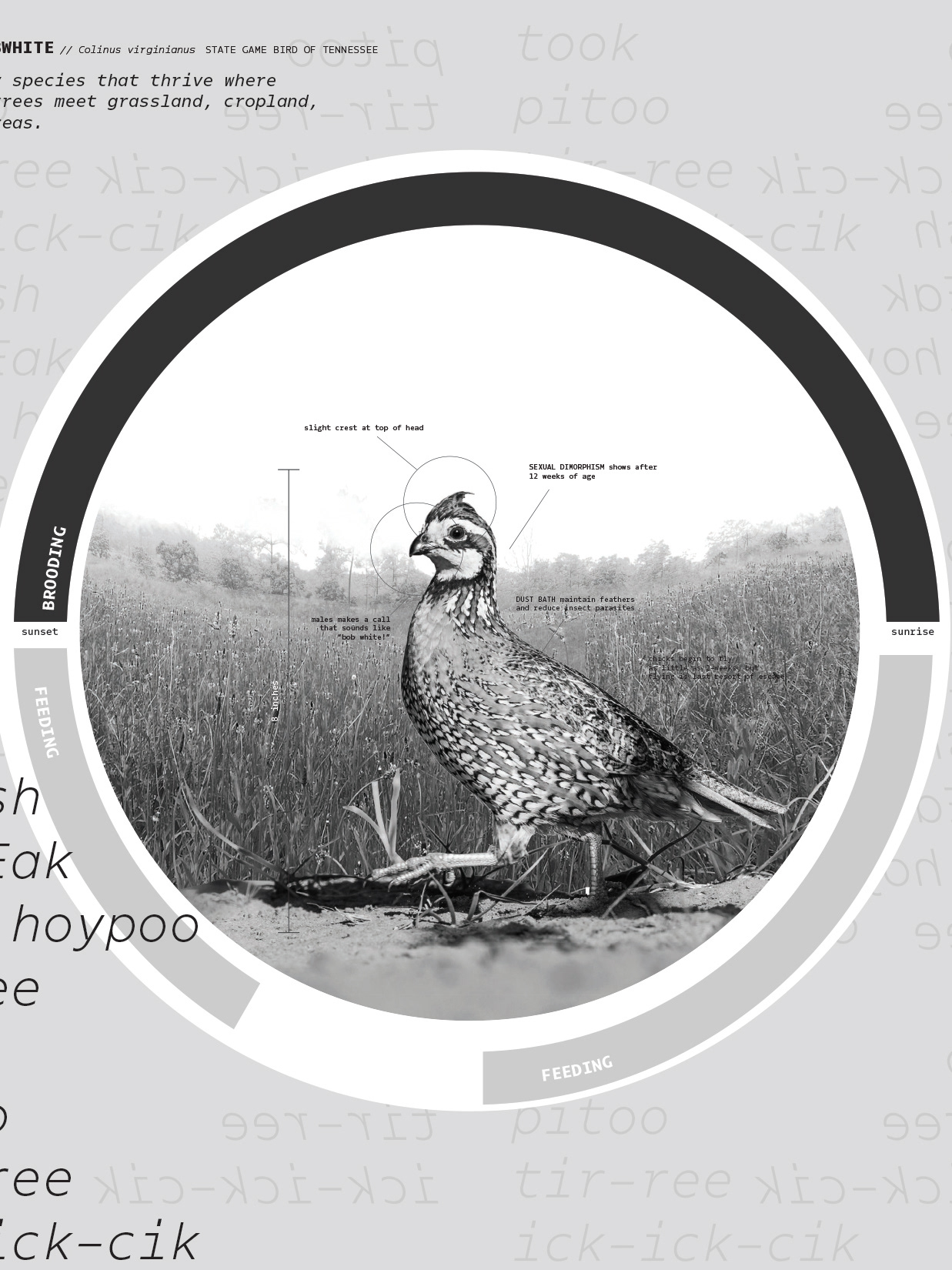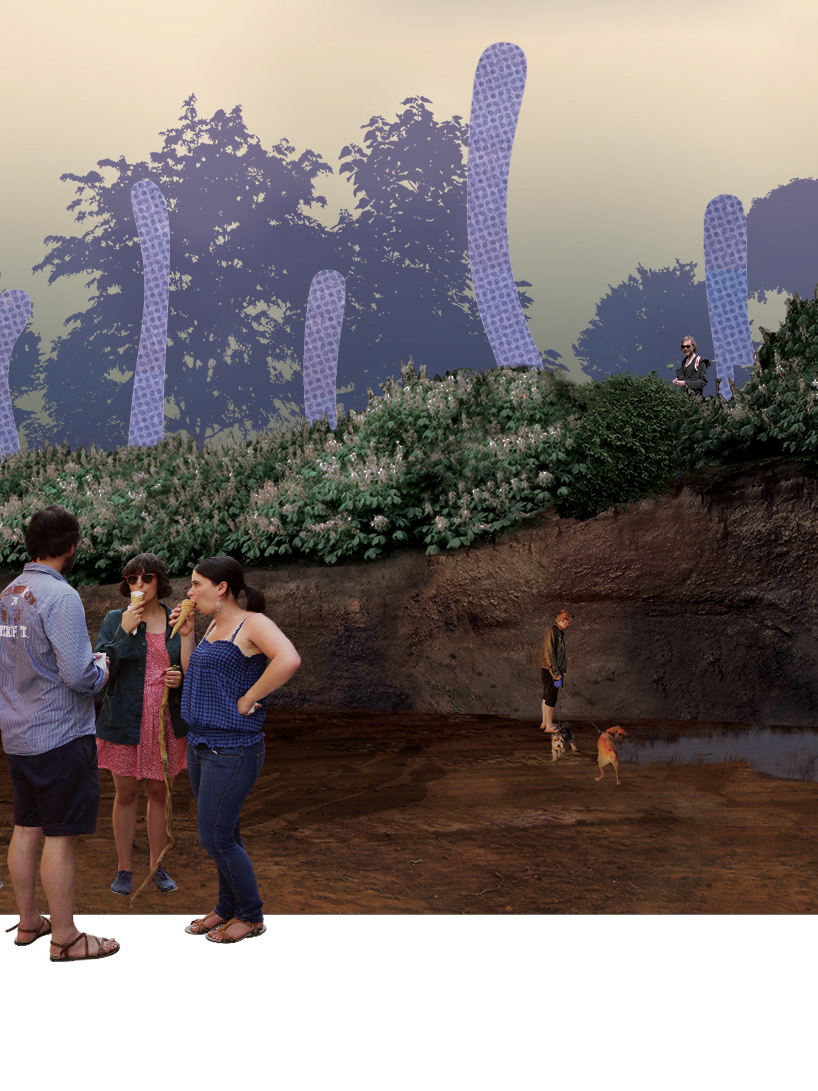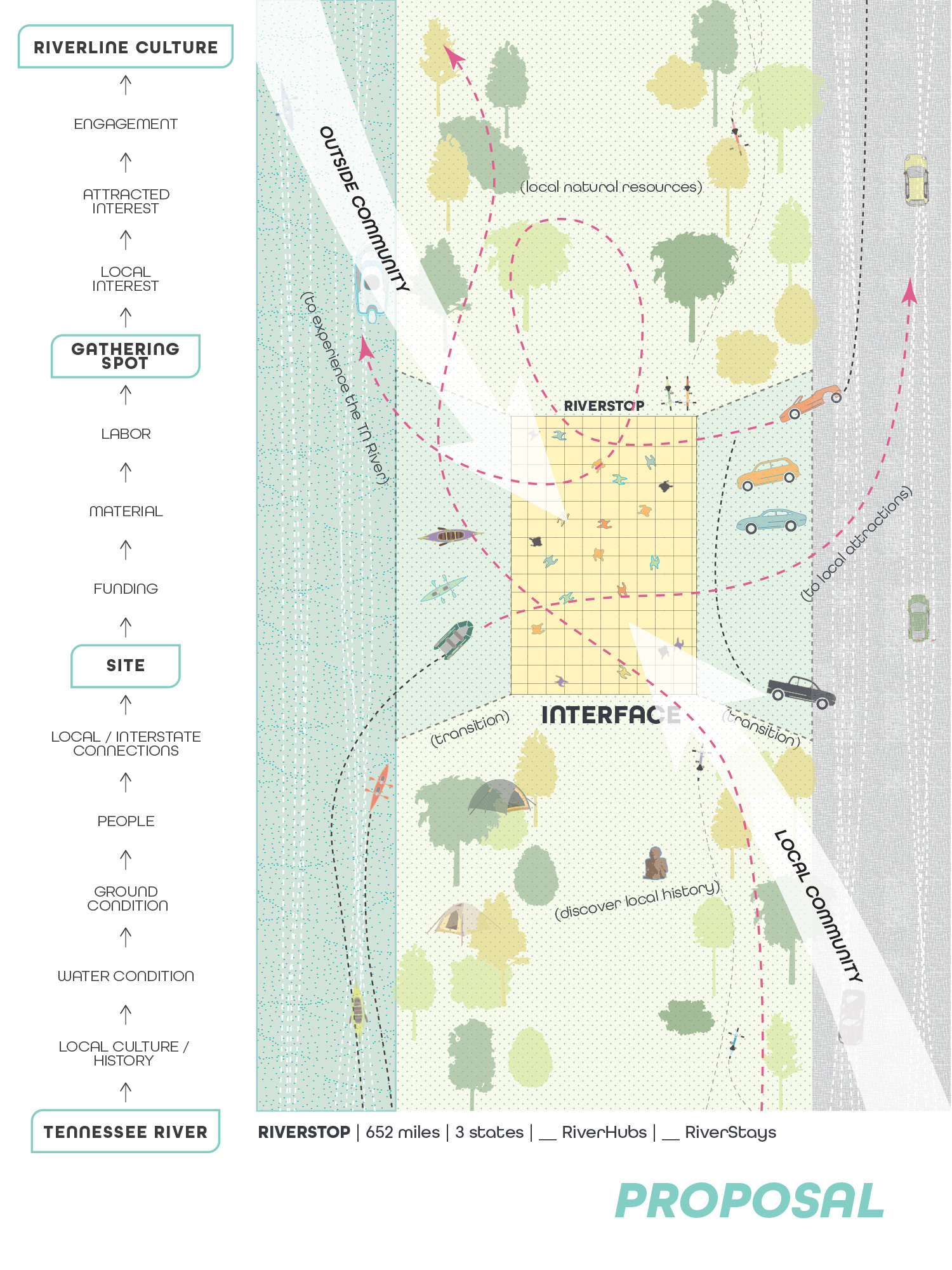
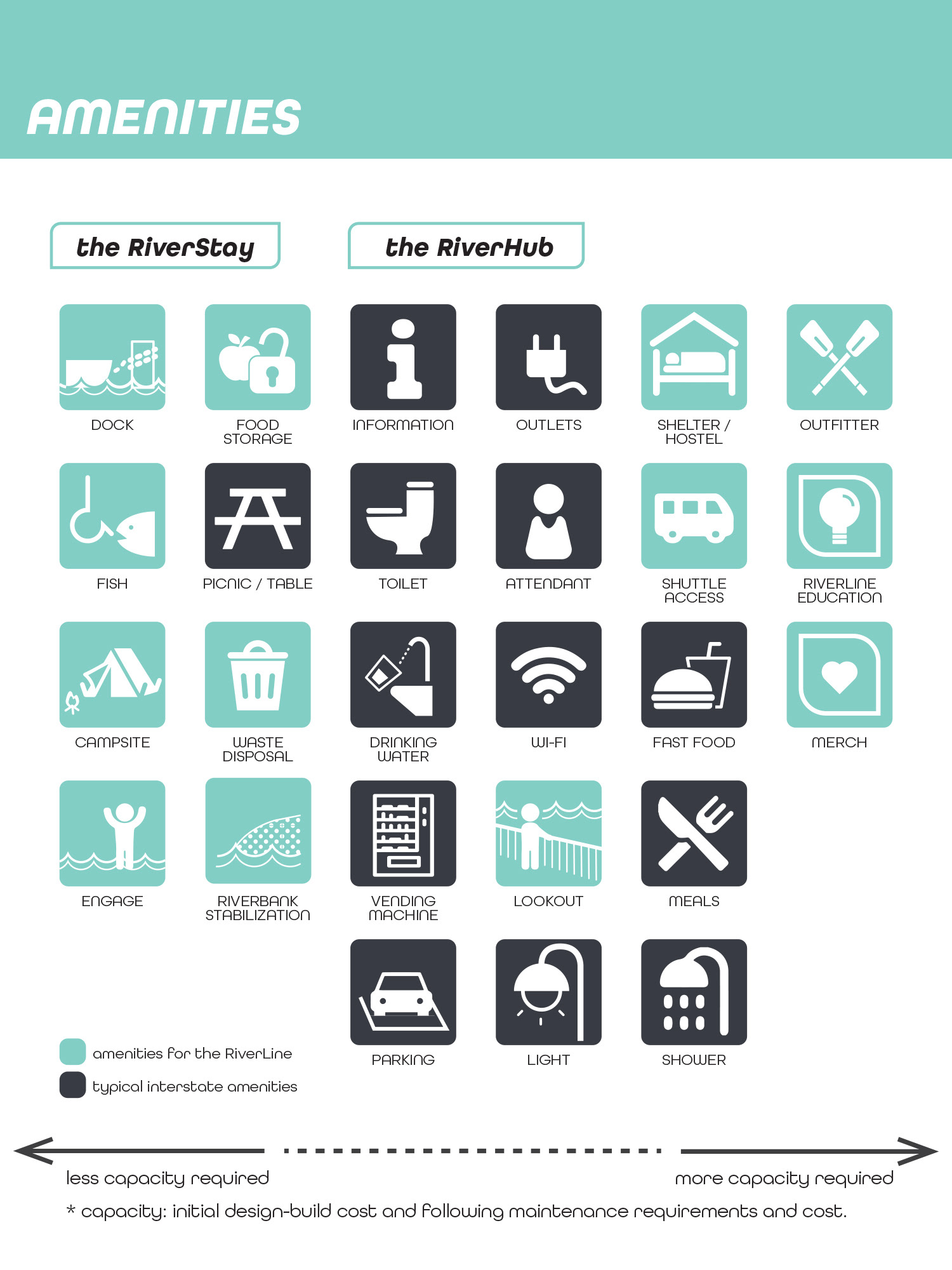
< Rest > is an essential part of any network. The Tennessee RiverLine will primarily be a transportation network of multi-modal trails, where the medium of the travel will be the Tennessee River and the land surrounding the waterbody. Rest, for any traveler, will be an integral part of their movement throughout the RiverLine. The Tennessee RiverLine RiverStop is a conceptual foundation to capitalize on necessity for a transportation network. Much like the reliable rest areas along the interstate highway system or the consistent placement of shelters along the Appalachian Trail, the proposal includes three types of the rest areas: rest as necessity (The RiverStay), rest as attraction (The RiverHub), and rest as opportunity. The first two types of rest areas have a suggested form. Structures provide space for a necessary rest (tapping into values of solitude and safety) and for an attractive rest (offering amenities that are immersive and interactive). Rest as opportunity does not have a designated form, but it is a mode of site selection that is in tune with local events and history; and capitalizes on the past as well as the upcoming future of the Tennessee Valley. The RiverLine RiverStop identifies four modes of rest. The concept of < rest > as physical relaxation, as an opportunity to take in the surroundings, as an occasion to interact with local human and nonhuman communities, and as an opportunity to exchange inputs and outputs (waste, money, ideas, etc.). The RiverStops will serve as an < interface > between different members of the RiverLine: from the Hero User to the residents of the local community, between watercraft users and land vehicles, and also between people and natural resources, to foster a dialogue about the history and future of the Tennessee Valley.
Study to understand rest.
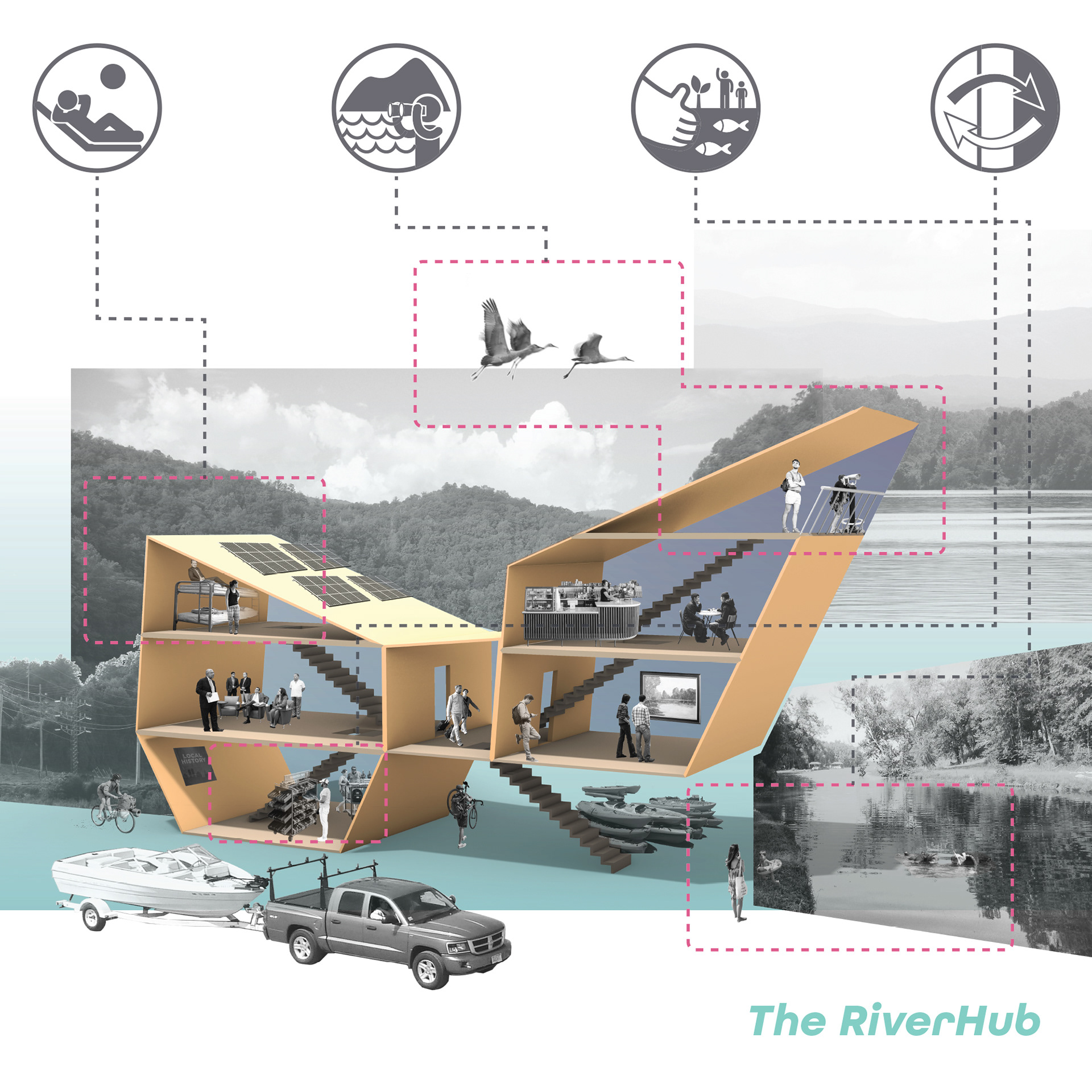

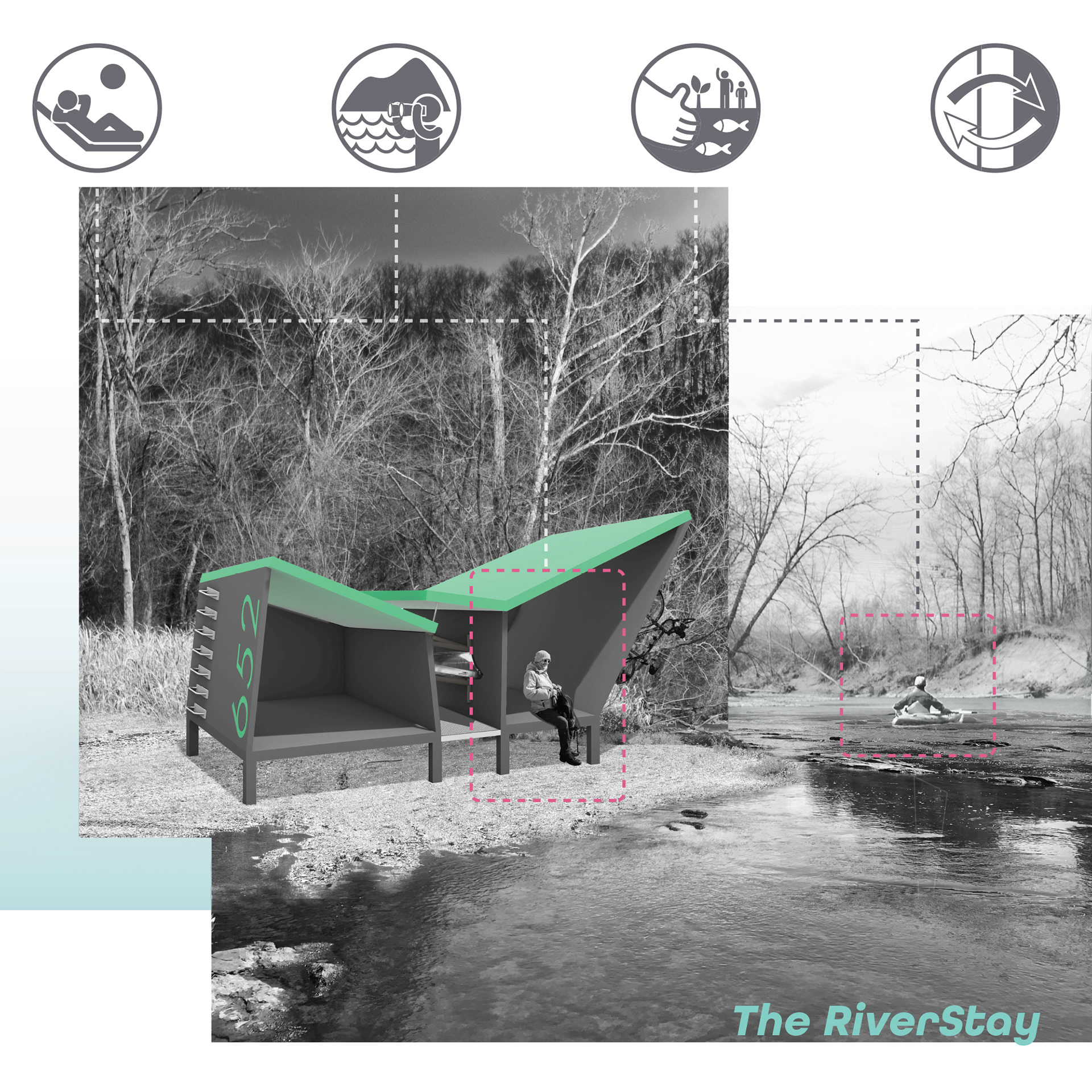
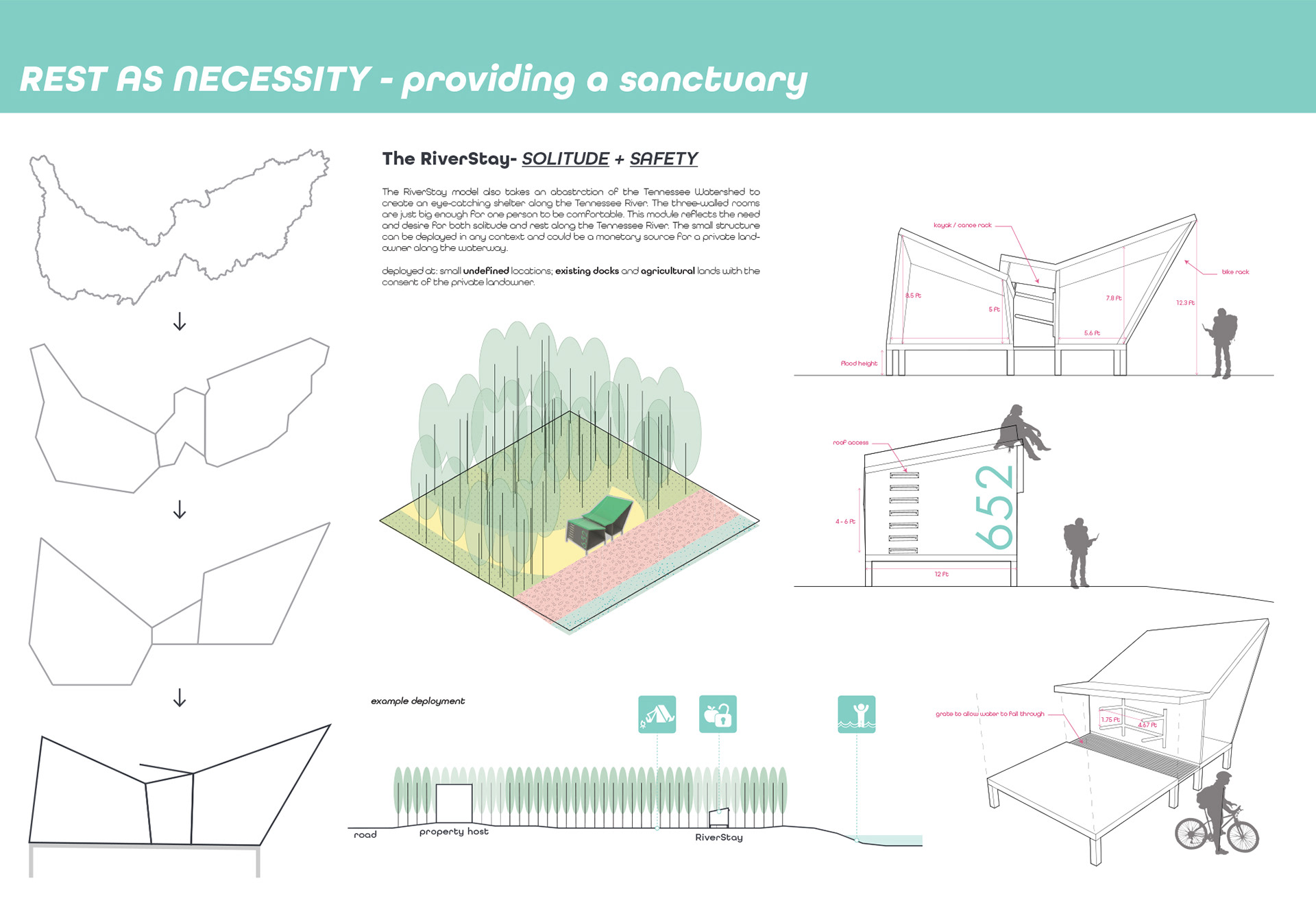
Case Study and Speculation


